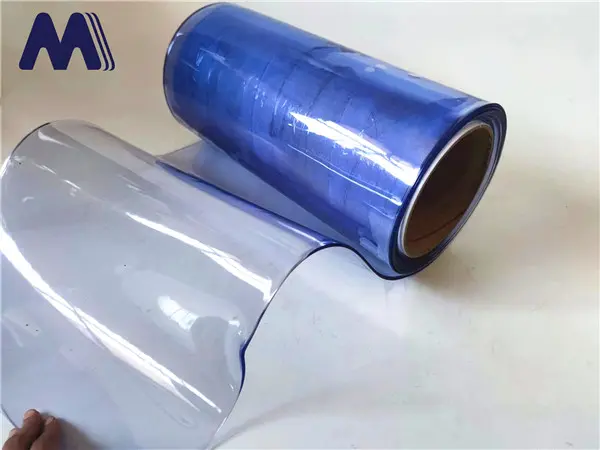Ṣafihan:
PVC, tabi polyvinyl kiloraidi, jẹ ohun elo ṣiṣu to wapọ ati lilo pupọ ti a mọ fun agbara rẹ, ifarada, ati irọrun. O ti lo ni ọpọlọpọ awọn ile-iṣẹ, lati ikole ati ọkọ ayọkẹlẹ si ilera ati apoti. Ọkan ninu awọn ohun elo olokiki ti PVC ni iṣelọpọ awọn aṣọ-ikele ṣiṣu PVC, eyiti o le ṣee lo ni ọpọlọpọ awọn agbegbe nitori irọrun wọn ati awọn ohun-ini aabo. Ninu bulọọgi yii, a yoo lọ sinu agbaye ti PVC gbóògì, Ṣawari awọn ohun-ini ti awọn aṣọ-ikele PVC rọ, ki o si jiroro lori awọn ohun elo oniruuru wọn.
Ilana iṣelọpọ PVC:
PVC jẹ iṣelọpọ nipasẹ ilana kemikali eka kan ti o kan polymerization ti monomer kiloraidi fainali. Fainali kiloraidi jẹ gaasi ti ko ni awọ ti a gba nipasẹ sisopọ ethylene, hydrocarbon ti a lo lọpọlọpọ. Lẹhin ìwẹnumọ, fainali kiloraidi monomer ṣe polymerizes lati dagba resini PVC, eyiti o le ṣe ilọsiwaju siwaju si ọpọlọpọ awọn ọja, pẹlu awọn aṣọ-ikele PVC rọ.
Awọn aṣọ-ikele PVC rirọ:
PVC rọ Awọn aṣọ-ikele, ti a tun mọ ni awọn aṣọ-ikele rinhoho, ni a ṣe lati awọn agbo ogun PVC ti a ṣe agbekalẹ ti o funni ni irọrun giga ati akoyawo. Awọn aṣọ-ikele wọnyi ni awọn ila PVC kọọkan, deede 2 si 5 mm nipọn, ti o ni lqkan ati ṣe idena lakoko gbigba gbigba irọrun ati hihan. Irọrun ti awọn aṣọ-ikele PVC gba wọn laaye lati koju awọn ipa ti o leralera, ṣiṣe wọn dara fun awọn agbegbe gbigbe nigbagbogbo gẹgẹbi awọn ibudo ikojọpọ tabi awọn ile itaja.

Awọn ohun elo ti awọn aṣọ-ikele PVC rirọ:
1. Ayika ile ise: PVC ṣiṣu Aṣọs ti wa ni lilo pupọ ni awọn ohun elo iṣelọpọ, awọn ile itaja ati awọn ohun elo iṣelọpọ lati ya sọtọ awọn agbegbe iṣẹ ti o yatọ, gẹgẹbi awọn yara itutu agbaiye, awọn yara mimọ tabi awọn yara alurinmorin. Wọn ṣe iranlọwọ lati ṣetọju iṣakoso iwọn otutu, dinku eruku ati idoti, ati dinku awọn ipele ariwo laisi idilọwọ ṣiṣan iṣẹ.
2. Awọn aaye ti iṣowo: Awọn ile itaja soobu, awọn ile itaja nla ati awọn ibi idana iṣowo nigbagbogbo lo awọn aṣọ-ikele PVC lati ya awọn agbegbe ipamọ, awọn firisa ti nrin tabi awọn ibi idana lati awọn aaye gbangba. Iseda sihin ti PVC ngbanilaaye hihan to, aridaju aabo ati irọrun ibojuwo.
3. Ile-iṣẹ Itọju Ilera: Awọn aṣọ-ikele PVC ti wa ni lilo pupọ ni awọn ile-iwosan, awọn ile-iwosan, ati awọn ile-iwosan bi awọn iboju ikọkọ ni awọn agbegbe alaisan tabi lati ya sọtọ awọn agbegbe aibikita. Awọn ohun-ini antibacterial wọn ati irọrun mimọ jẹ ki wọn jẹ apẹrẹ fun mimu awọn iṣedede mimọ.
4. Ile-iṣẹ ọkọ ayọkẹlẹ: Awọn aṣọ-ikele PVC ni a lo ni awọn ile-ifọṣọ ati awọn ile-iṣẹ fifọ ile-iṣẹ lati ni omi, detergent tabi awọn eefin kikun lakoko gbigba titẹsi ati ijade rọrun.
Awọn anfani ti awọn aṣọ-ikele PVC rirọ:
- Idabobo Ooru: Awọn aṣọ-ikele PVC dinku isonu ti ooru tabi afẹfẹ tutu, iranlọwọ pẹlu ilana iwọn otutu ati fifipamọ agbara.
- Idinku ariwo: Awọn aṣọ-ikele wọnyi ni imunadoko dinku awọn ipele ariwo ati ṣẹda agbegbe iṣẹ itunu diẹ sii.
- Eruku ati Iṣakoso idoti: Awọn aṣọ-ikele PVC di eruku, idoti ati idoti, ni idaniloju aaye iṣẹ mimọ.
- Idaabobo UV: Diẹ ninu awọn aṣọ-ikele PVC jẹ apẹrẹ lati ṣe idiwọ awọn egungun ultraviolet (UV), idilọwọ idinku tabi ibajẹ si ẹru tabi ohun elo ifura.
Ni paripari:
PVC gbóògì ati rọ Awọn aṣọ-ikele PVC ṣe ipa pataki ni ile-iṣẹ ode oni, ti o funni ni iṣipopada pupọ ati ilowo. Boya ni ile-iṣẹ, iṣowo, ilera tabi awọn agbegbe ọkọ ayọkẹlẹ, awọn aṣọ-ikele PVC rọ pese daradara, awọn solusan idiyele-doko lati mu ilọsiwaju ailewu, iṣakoso iwọn otutu ati iṣelọpọ ibi iṣẹ. Loye ilana iṣelọpọ PVC ati awọn ohun elo ti awọn aṣọ-ikele PVC rọ jẹ ki awọn iṣowo ṣe awọn yiyan alaye lakoko ti o gbero awọn orisun iyebiye wọnyi fun awọn iwulo pato wọn.
Post time: Nov-27-2023



